Abstract
1. After the addition of noradrenaline (final concentration 4 × 10-5 M) to the inner medium of isolated toad skins, they underwent a depolarization (inner surface becoming less positive) followed by a hyperpolarization.
2. The dependence of the minimal and maximal levels of the depolarizing and hyperpolarizing phases of the response upon the external concentrations of sodium and chloride ions was examined.
3. The experimental data were considered to support the view that the hyperpolarization was generated by an increase in the sodium to chloride permeability ratio for the outer barrier of the skin and that the depolarization resulted from a transient increase in the conductance of transient shunt pathways in the skin.
4. When the external sodium and chloride ions were replaced by magnesium (or potassium) and sulphate ions, noradrenaline initiated a transient hyperpolarization. During this hyperpolarizing response the time course of the change in the skin's conductance resembled that of the skin potential. The polarity of the response was changed by reversing the chloride concentration gradient across the skin.
5. The dependence of the maximal level of the hyperpolarizing response upon the internal potassium concentration was examined.
6. It was concluded that the hyperpolarizing response was generated partially by an increase in the potassium to chloride permeability ratio for the inner barrier of the skin and predominantly by the movement of chloride and accompanying cations through a transient shunt pathway, probably the active glands.
Full text
PDF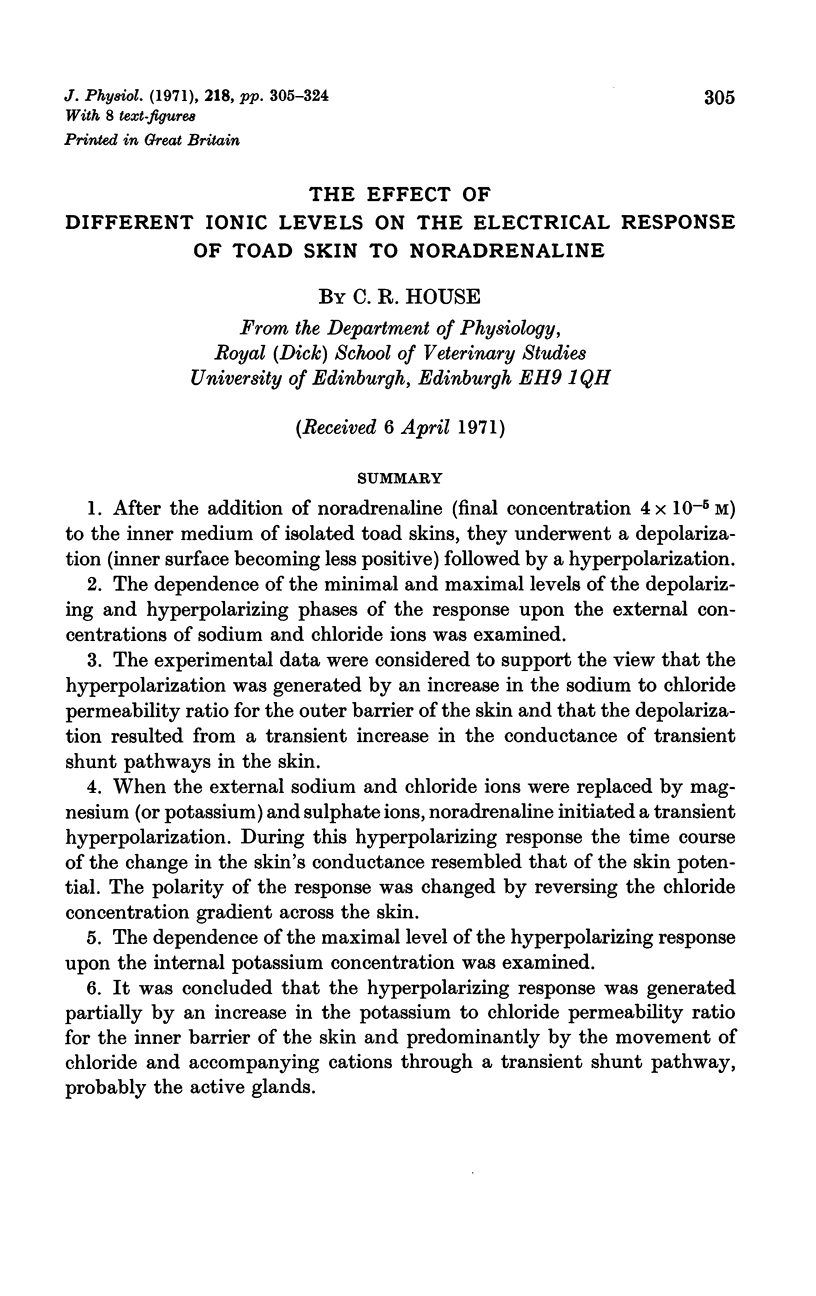
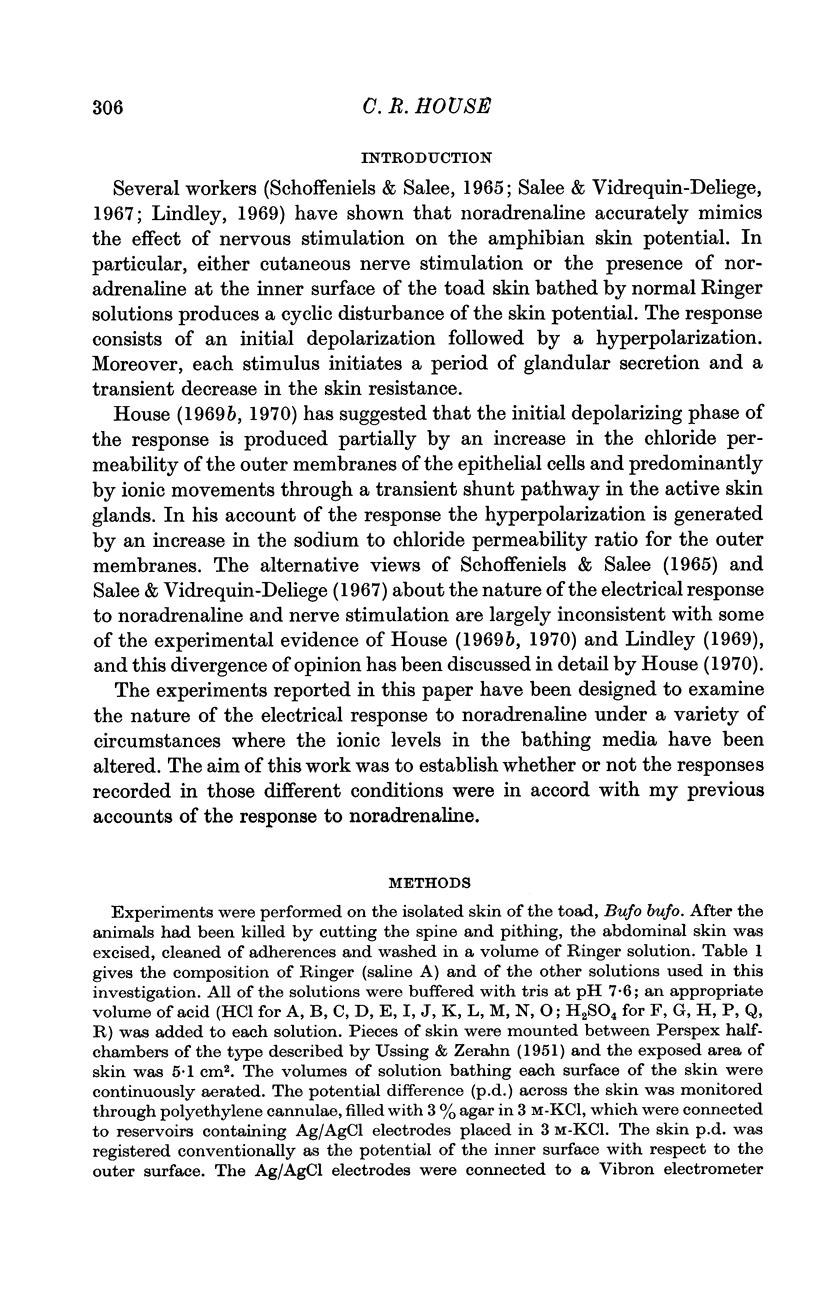
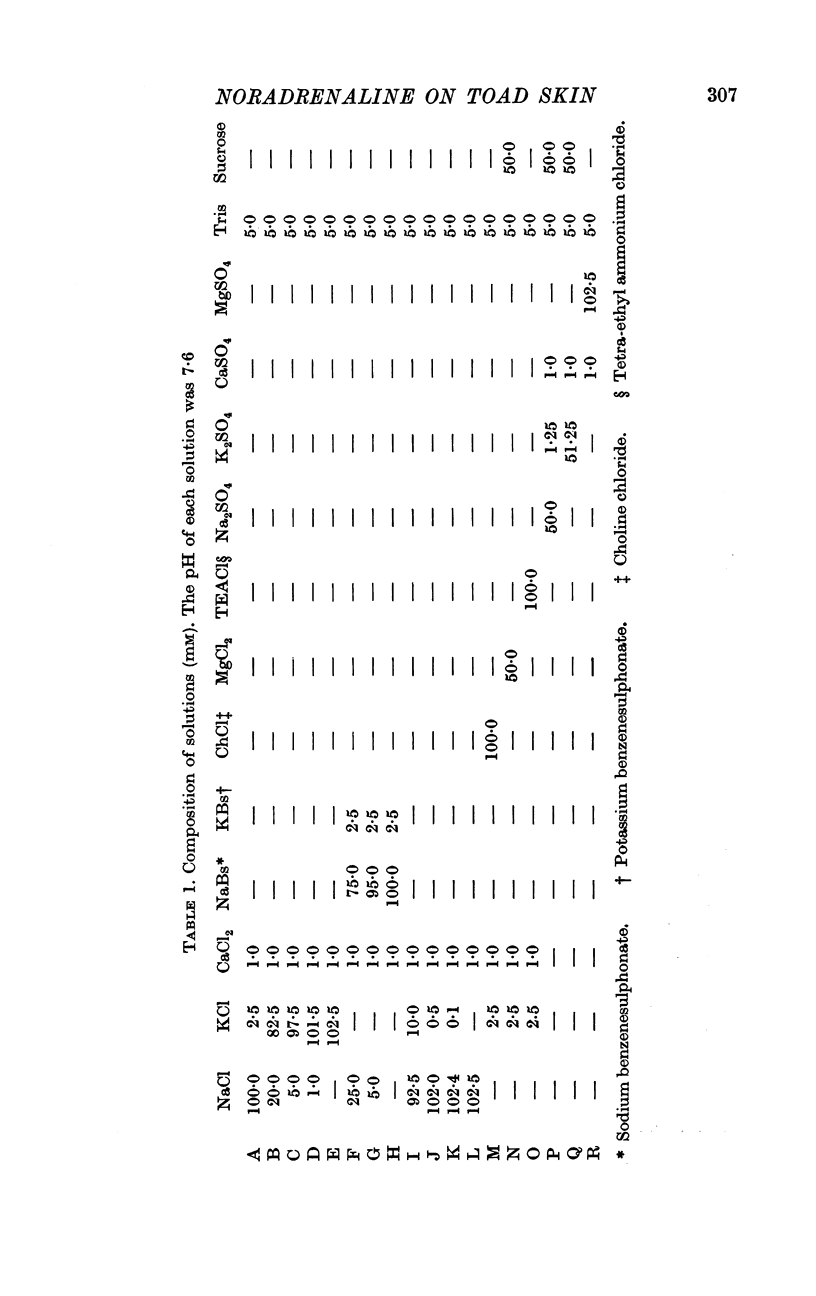
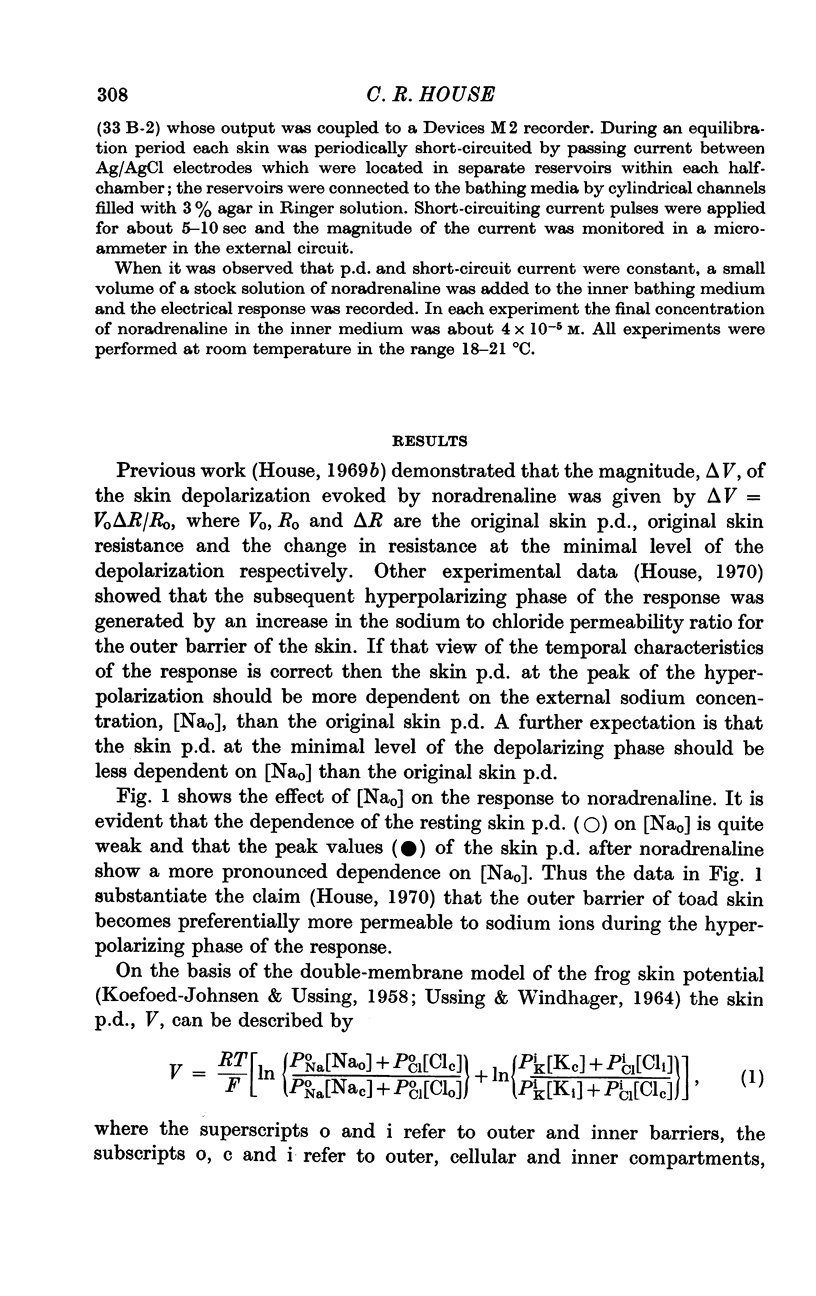
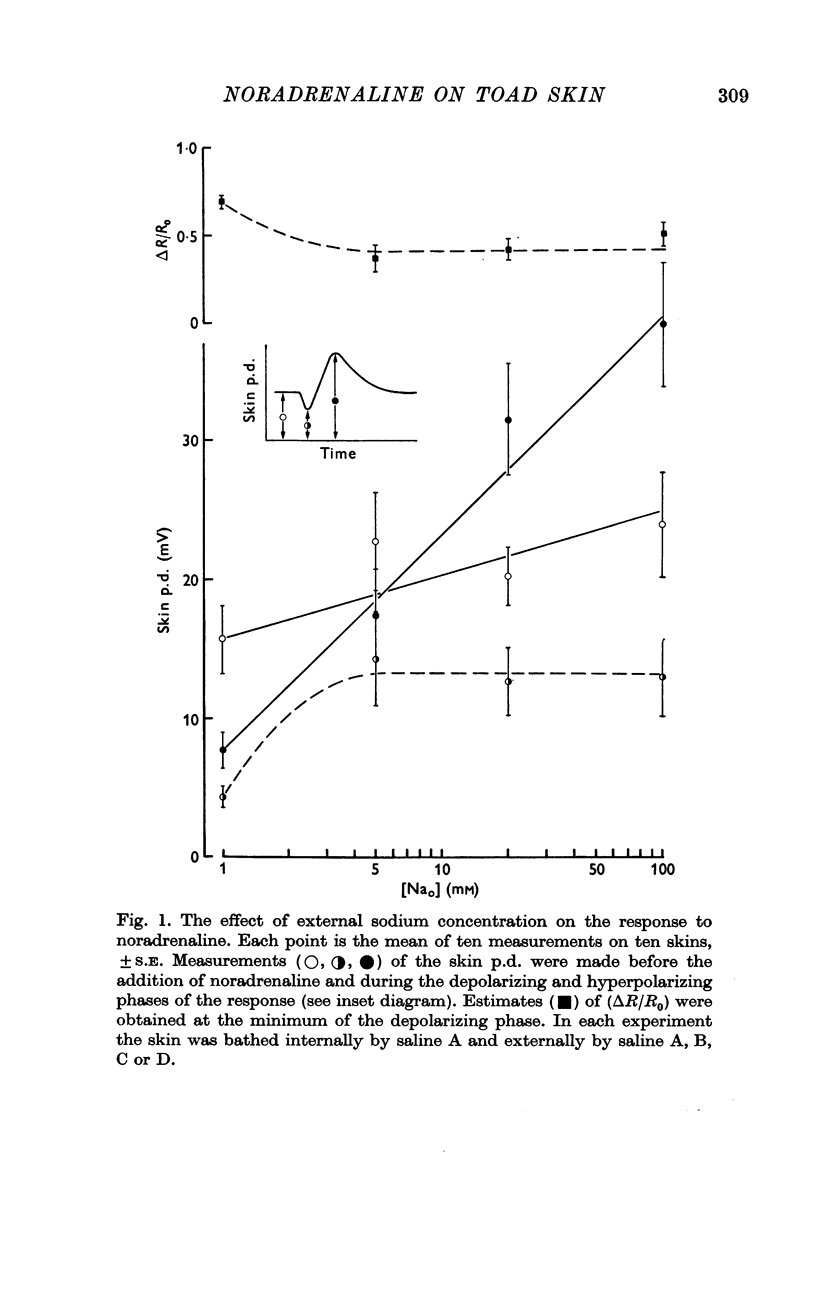
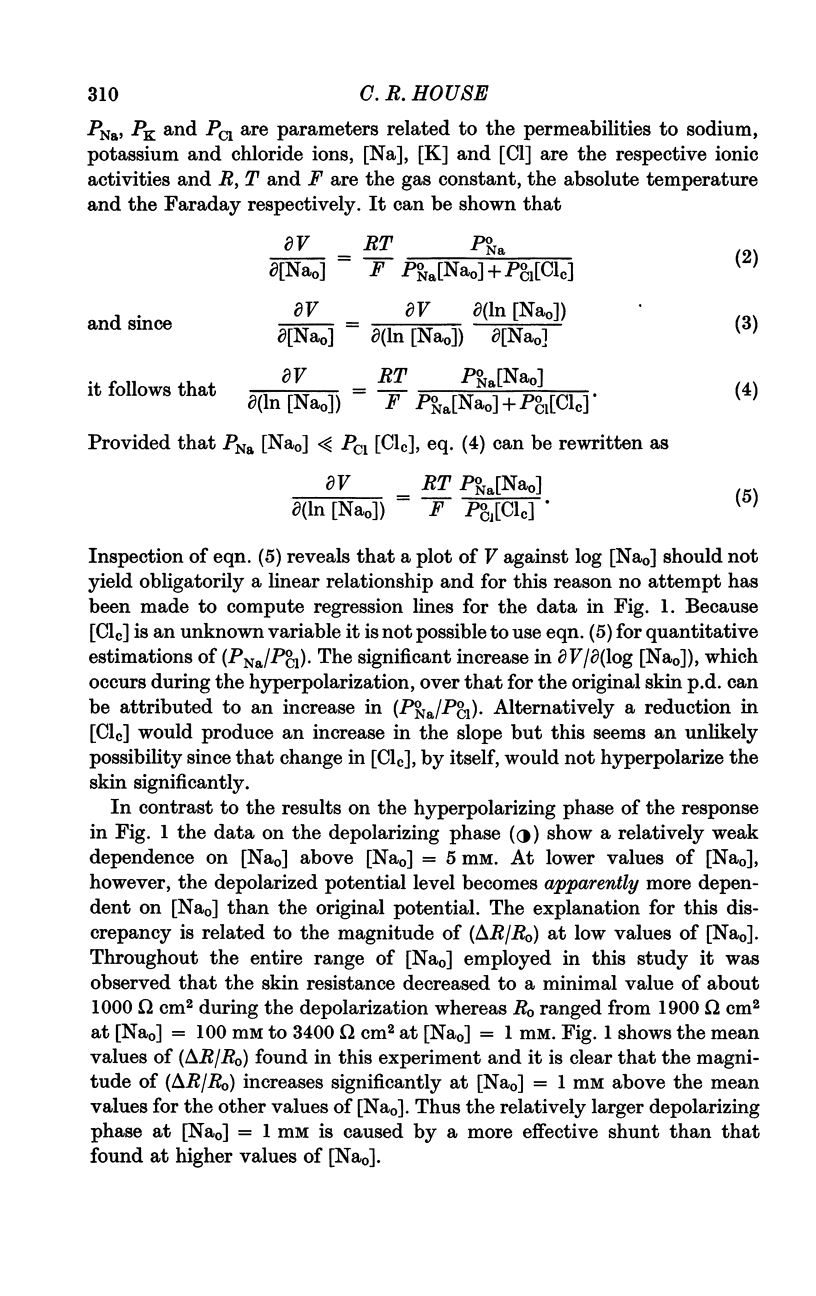
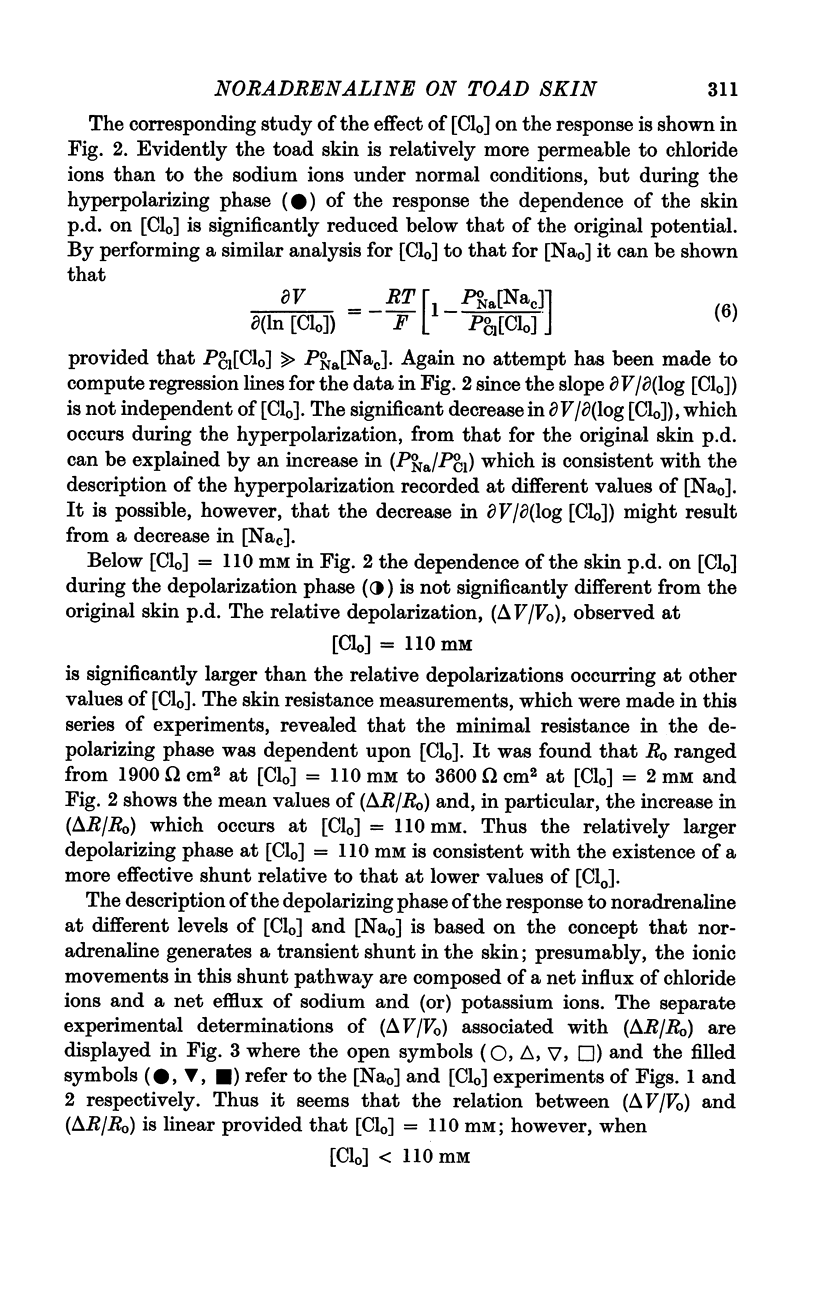
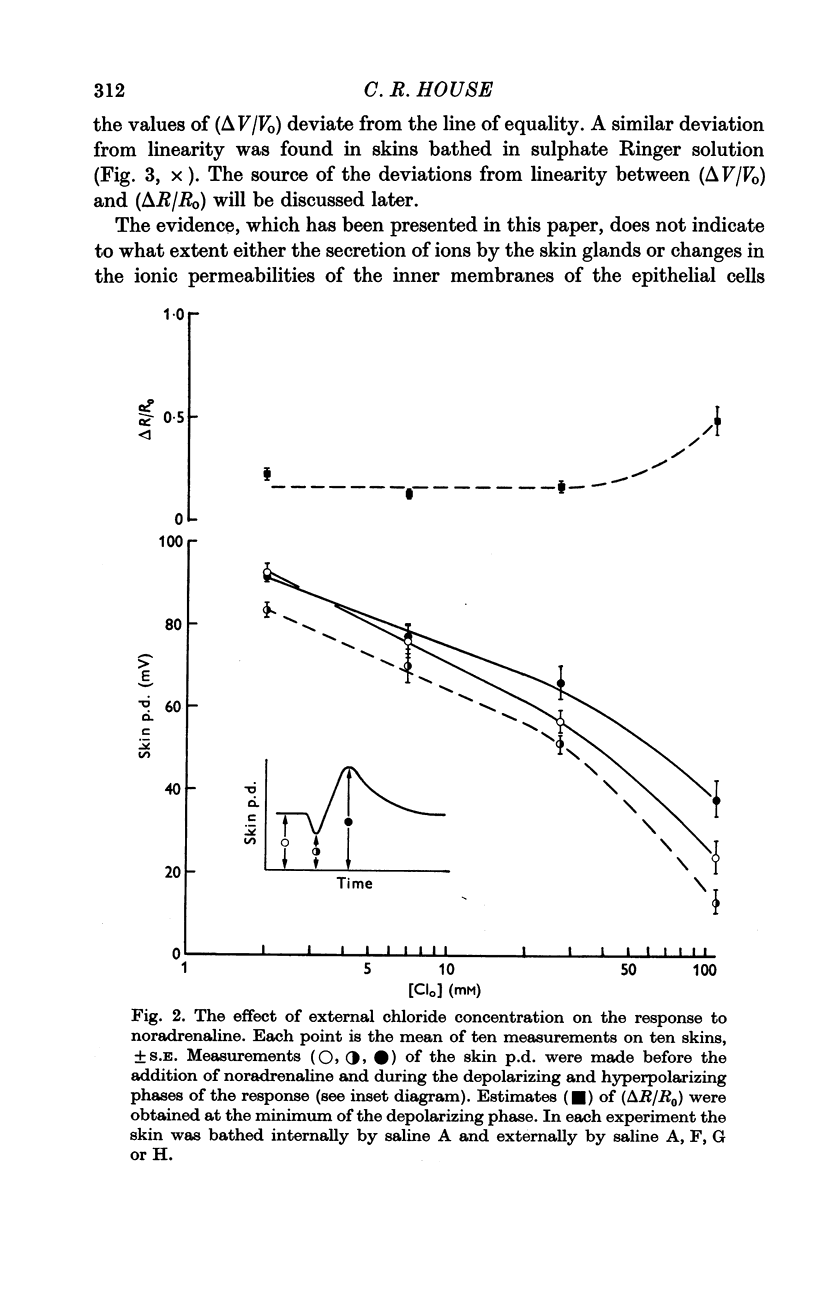
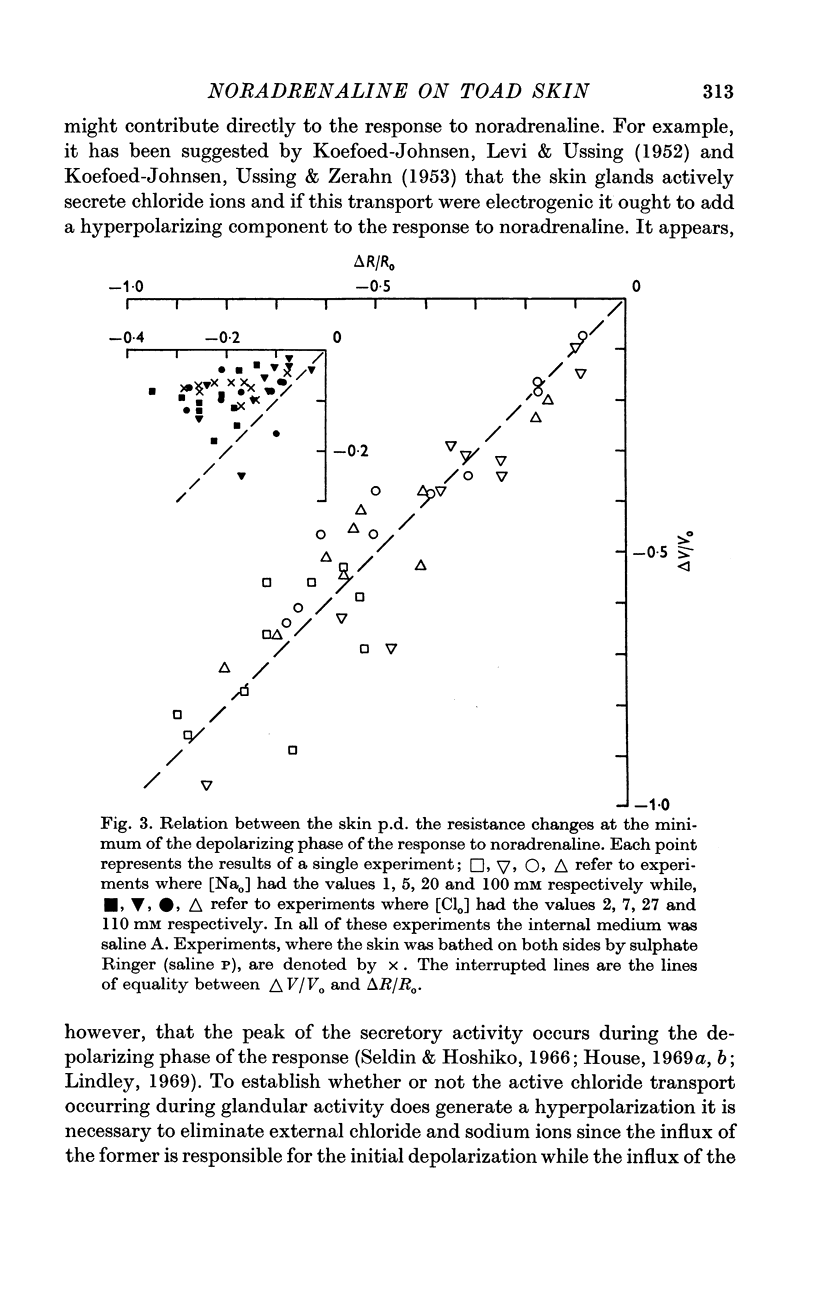
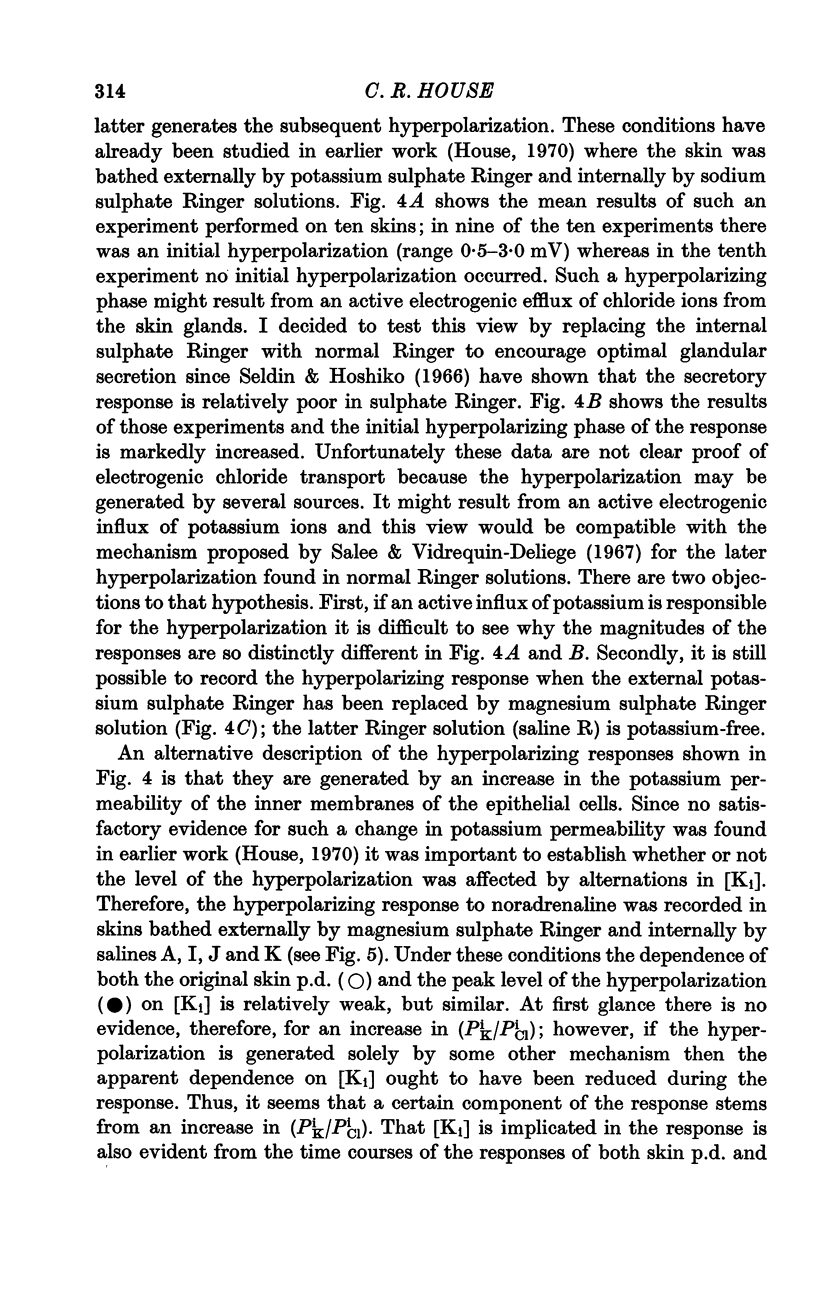
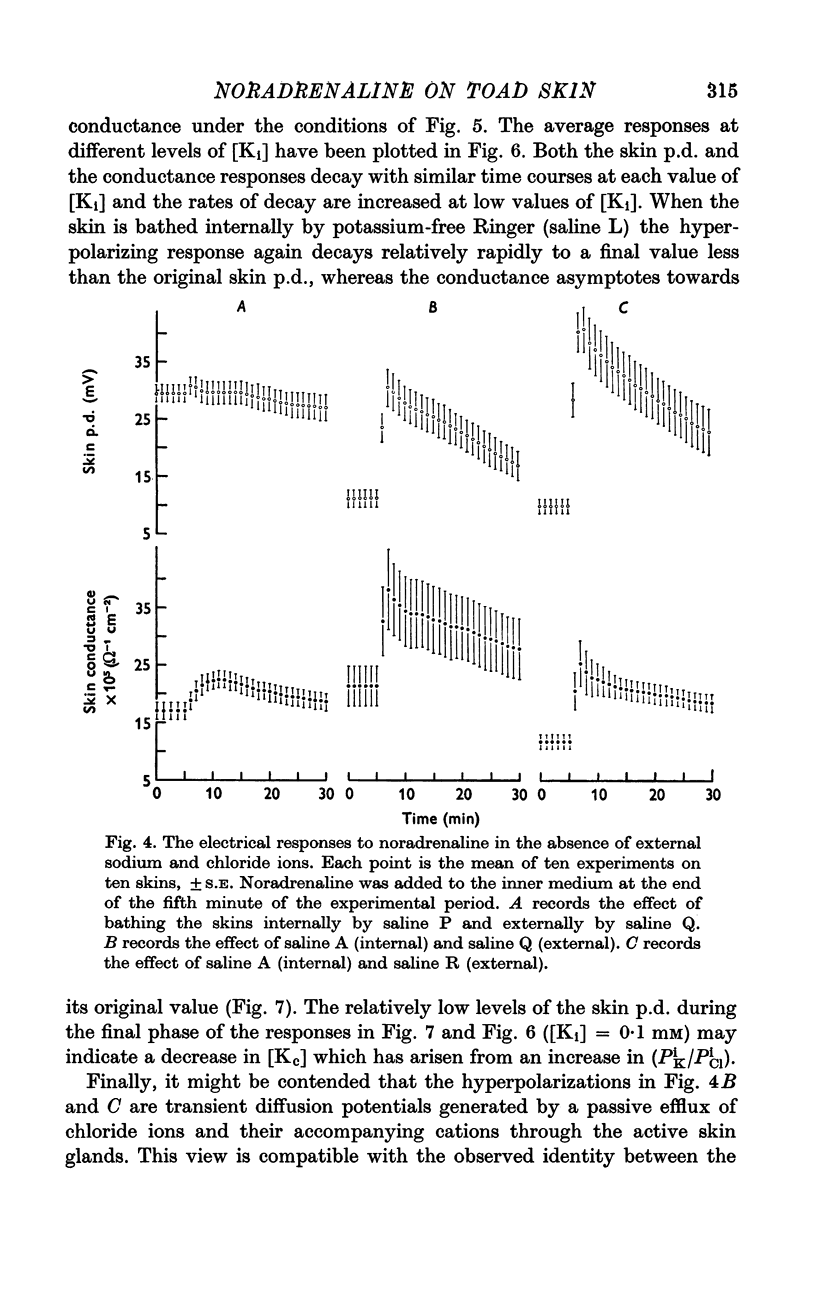
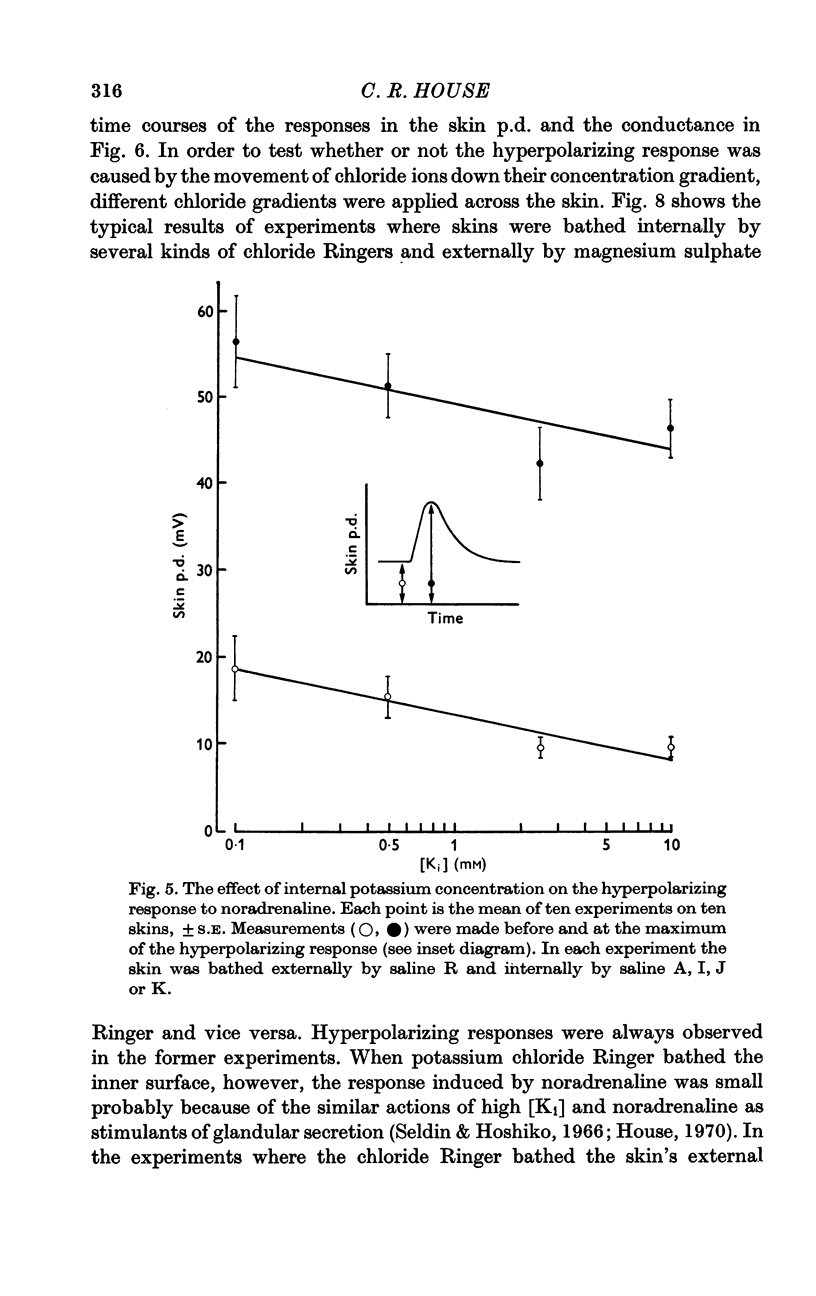
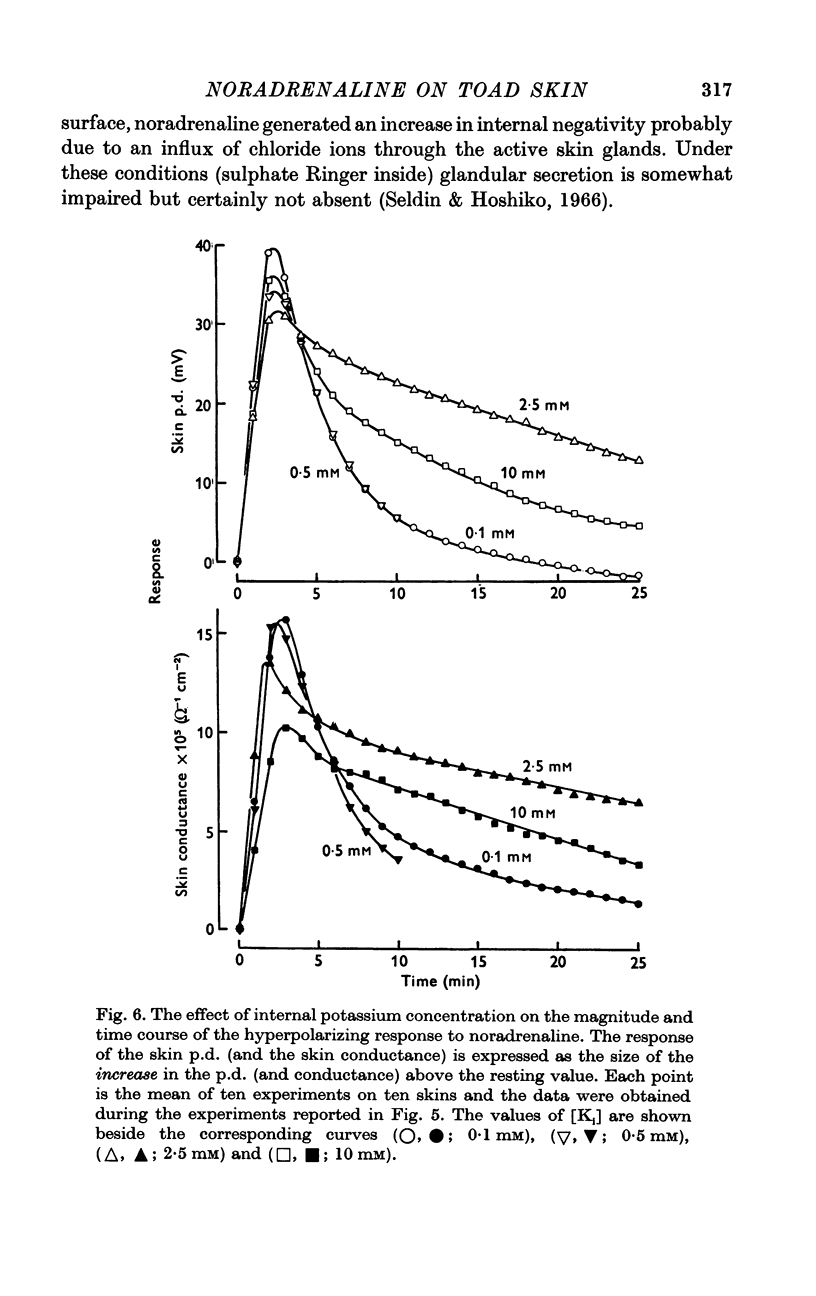
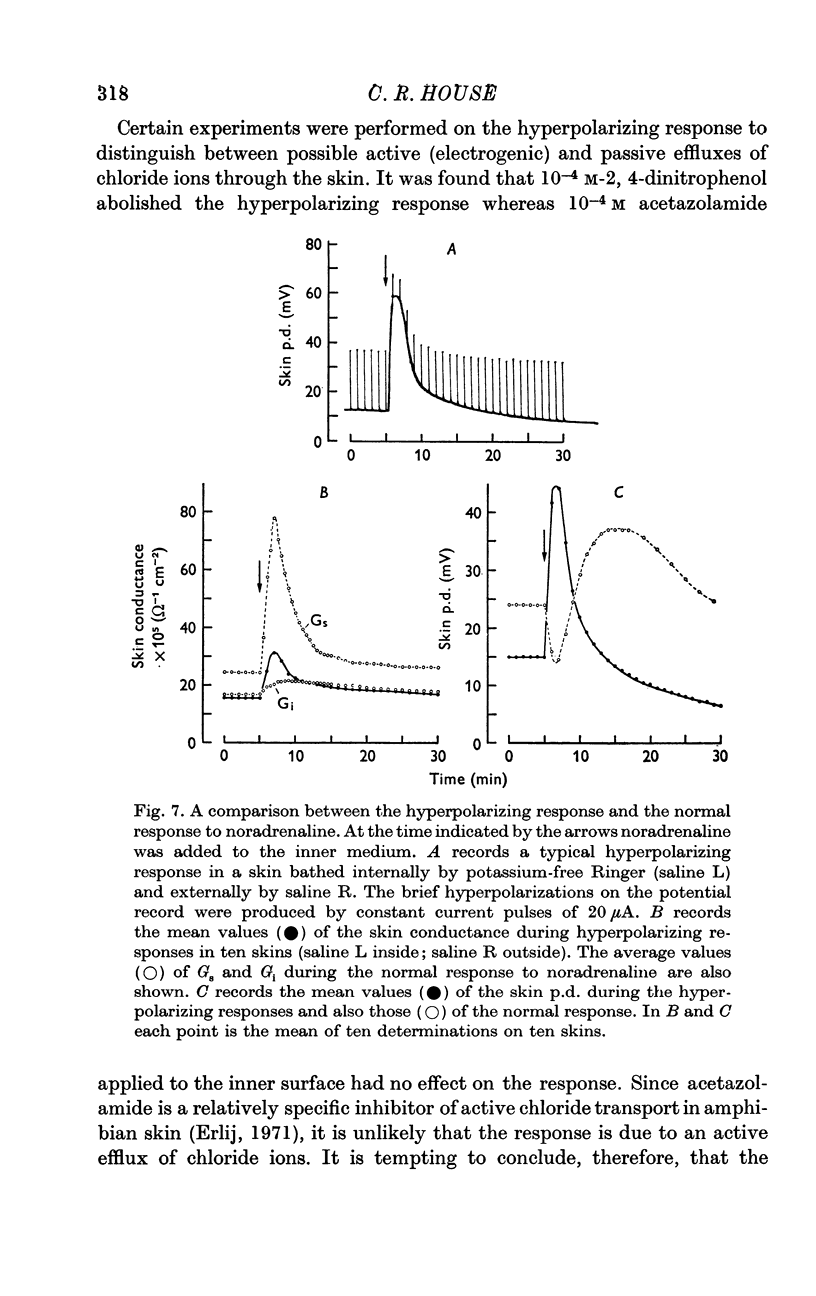
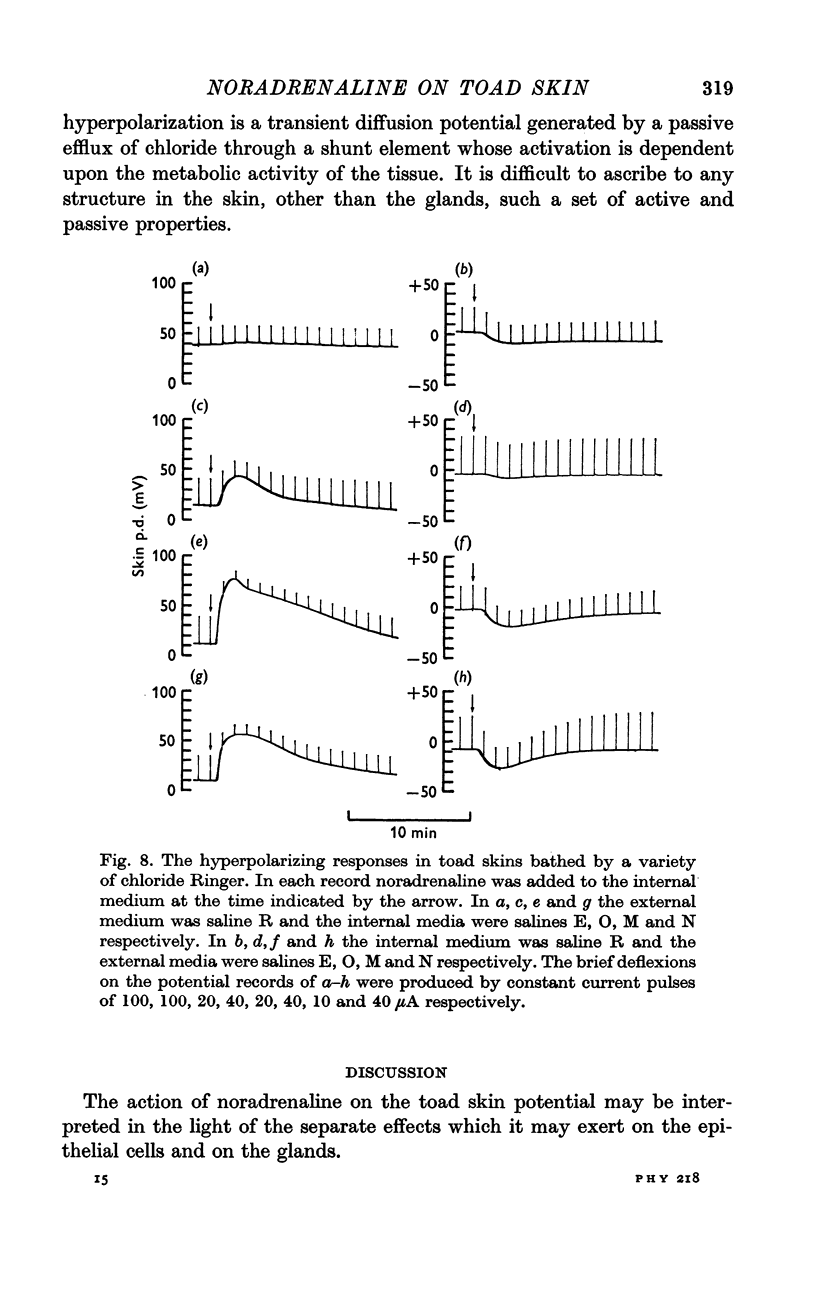
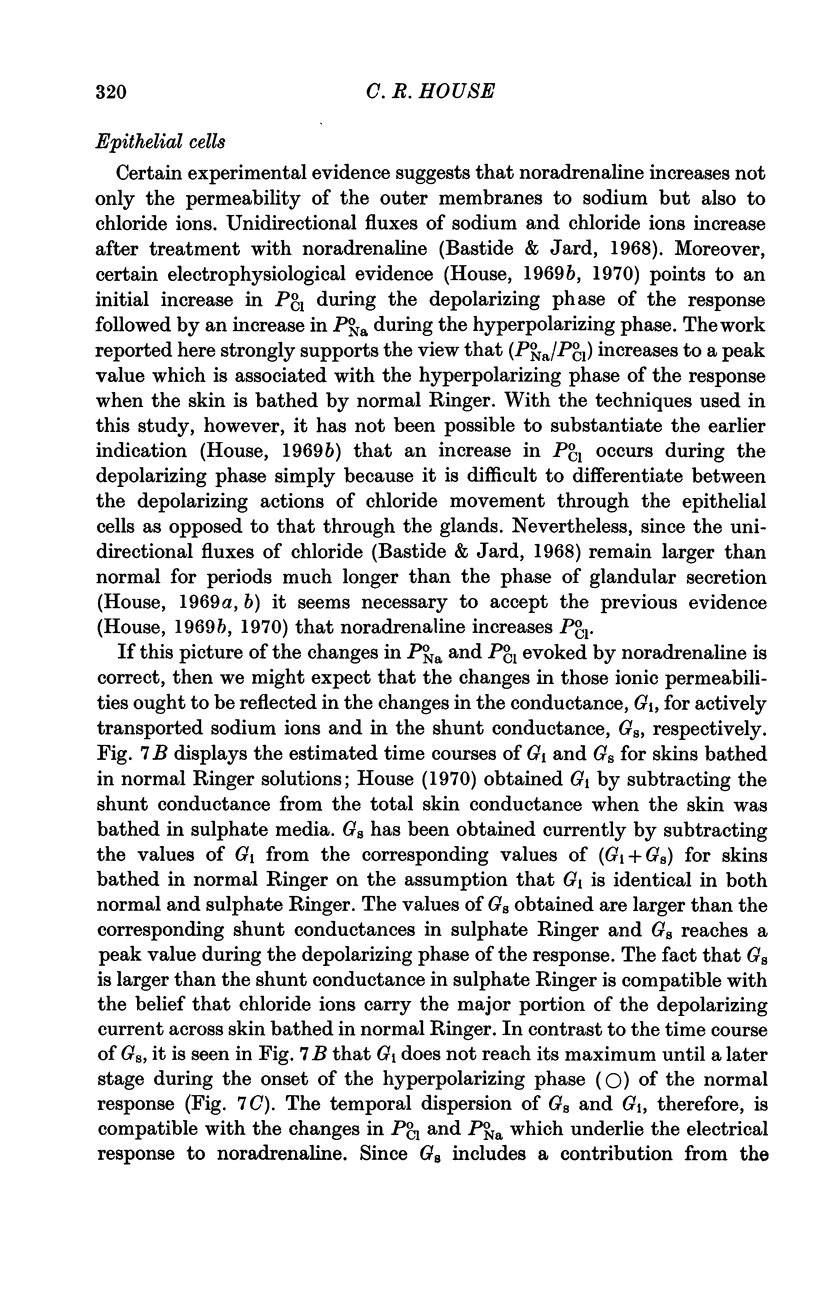
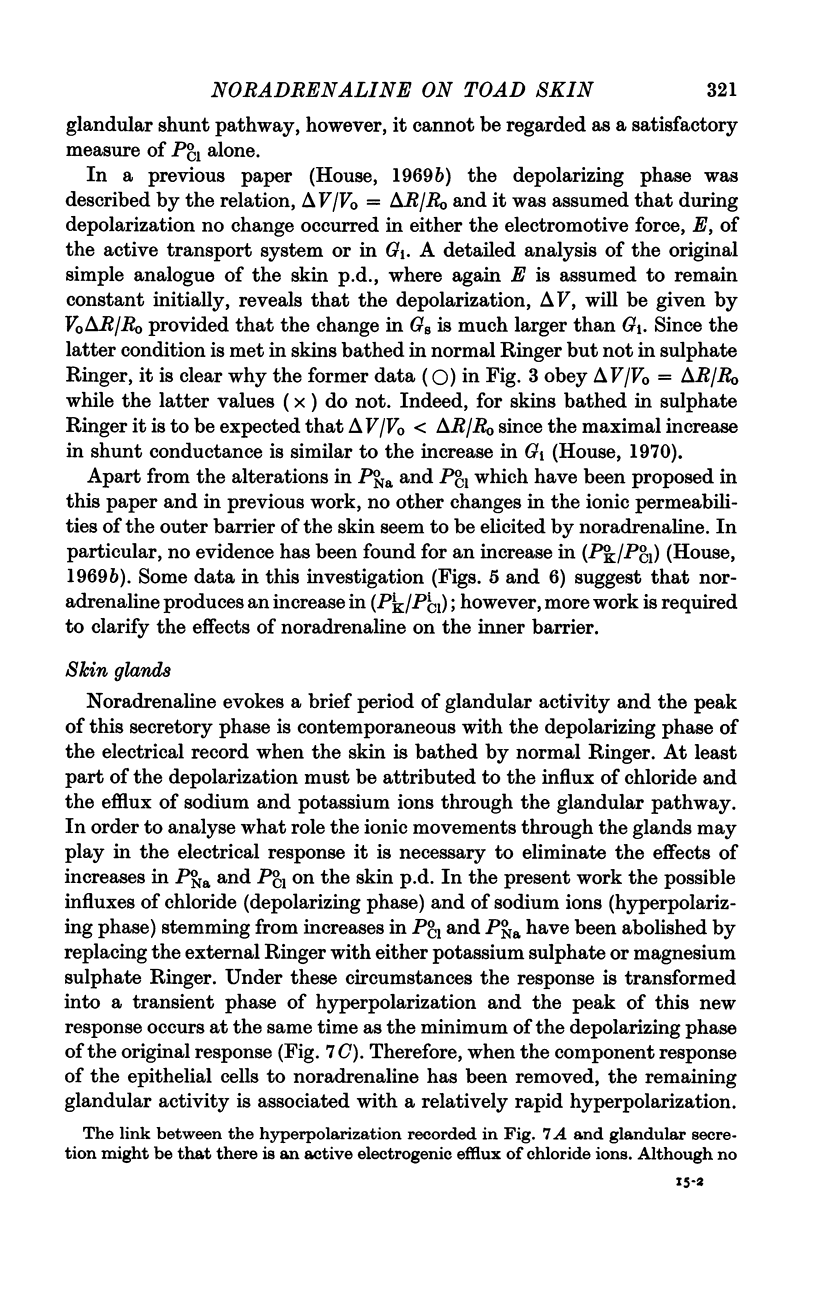
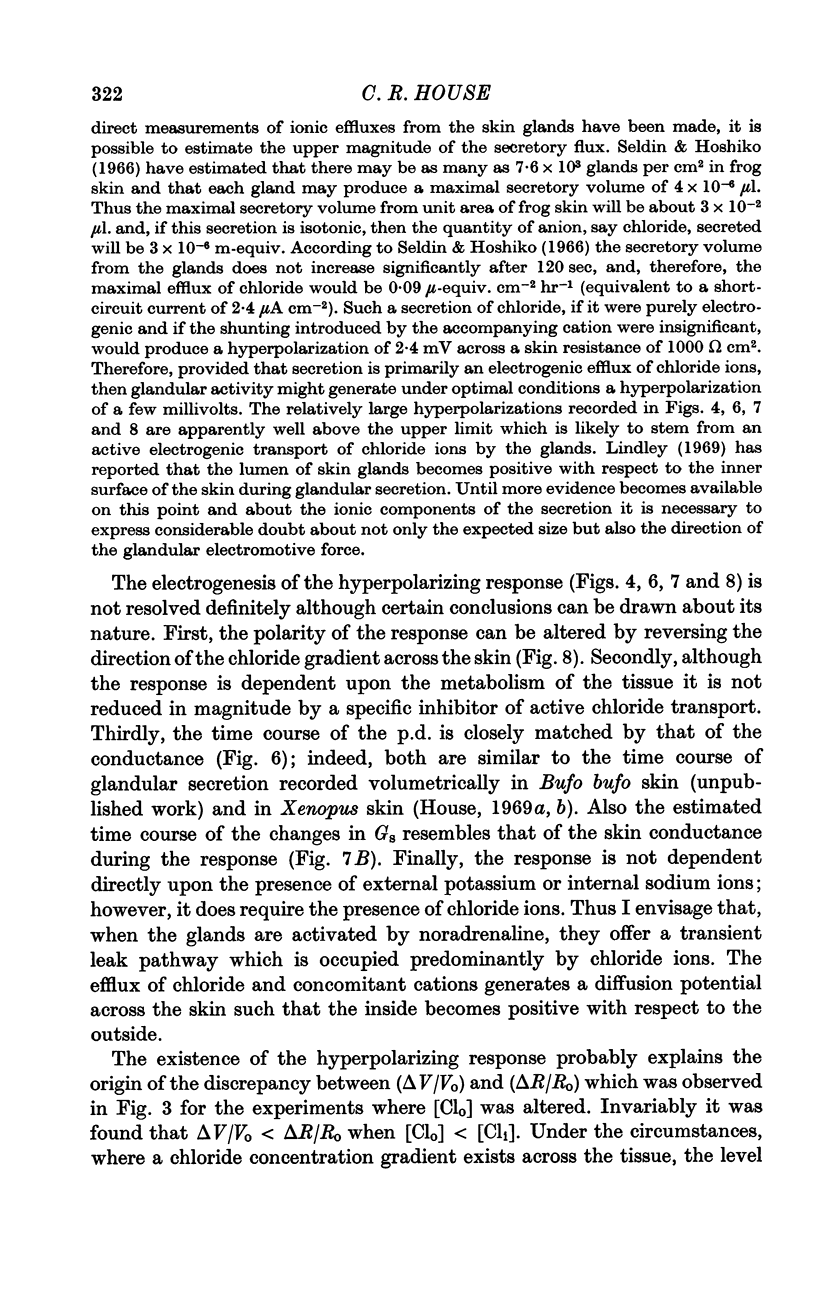
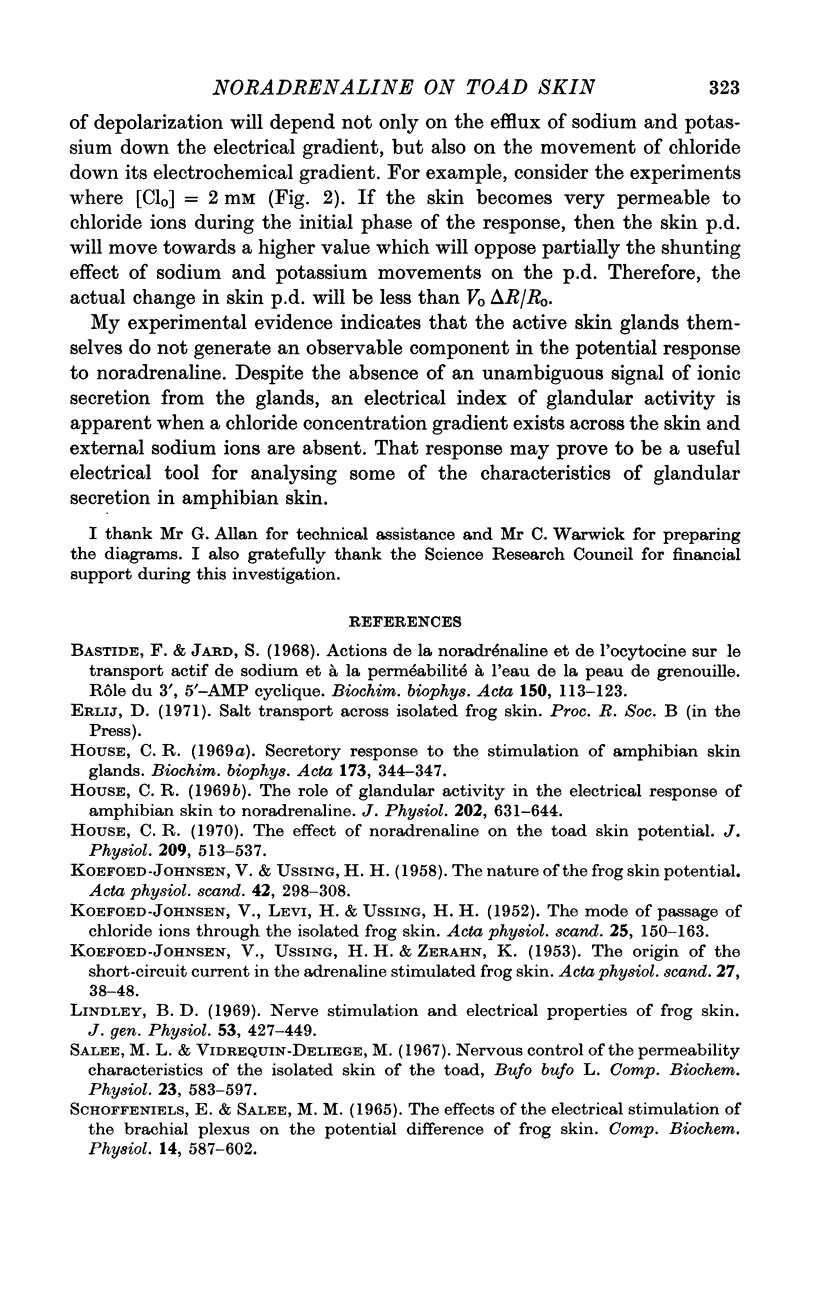
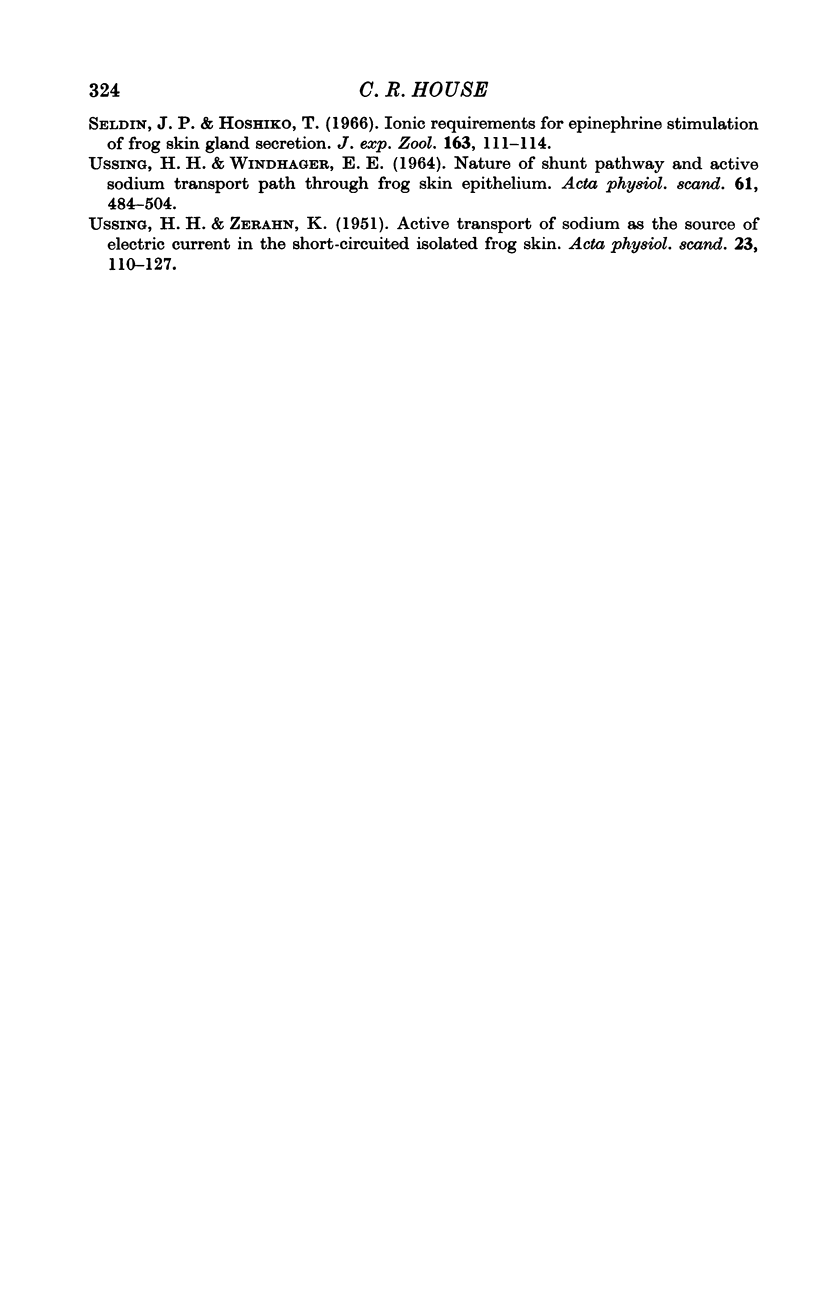
Selected References
These references are in PubMed. This may not be the complete list of references from this article.
- Bastide F., Jard S. Actions de la noradrénaline et de l'oxytocine sur le transport actif de sodium et la permeabilité à l'eau de la peau de grenouille. Rôle du 3',5'-AMP cyclique. Biochim Biophys Acta. 1968 Jan 3;150(1):113–123. doi: 10.1016/0005-2736(68)90014-x. [DOI] [PubMed] [Google Scholar]
- House C. R. Secretory response to the stimulation of amphibian skin glands. Biochim Biophys Acta. 1969 Mar 11;173(2):344–347. doi: 10.1016/0005-2736(69)90118-7. [DOI] [PubMed] [Google Scholar]
- House C. R. The effect of noradrenaline on the toad skin potential. J Physiol. 1970 Aug;209(3):513–537. doi: 10.1113/jphysiol.1970.sp009177. [DOI] [PMC free article] [PubMed] [Google Scholar]
- House C. R. The role of glandular activity in the electrical response of amphibian skin to noradrenaline. J Physiol. 1969 Jun;202(3):631–644. doi: 10.1113/jphysiol.1969.sp008831. [DOI] [PMC free article] [PubMed] [Google Scholar]
- JOHNSEN V. K., LEVI H., USSING H. H. The mode of passage of chloride ions through the isolated frog skin. Acta Physiol Scand. 1952 Jun 6;25(2-3):150–163. doi: 10.1111/j.1748-1716.1952.tb00866.x. [DOI] [PubMed] [Google Scholar]
- KOEFOED-JOHNSEN V., USSING H. H. The nature of the frog skin potential. Acta Physiol Scand. 1958 Jun 2;42(3-4):298–308. doi: 10.1111/j.1748-1716.1958.tb01563.x. [DOI] [PubMed] [Google Scholar]
- KOEFOED-JOHNSEN V., USSING H. H., ZERAHN K. The origin of the short-circuit current in the adrenaline stimulated frog skin. Acta Physiol Scand. 1952;27(1):38–48. doi: 10.1111/j.1748-1716.1953.tb00922.x. [DOI] [PubMed] [Google Scholar]
- Lindley B. D. Nerve stimulation and electrical properties of frog skin. J Gen Physiol. 1969 Apr;53(4):427–449. doi: 10.1085/jgp.53.4.427. [DOI] [PMC free article] [PubMed] [Google Scholar]
- SCHOFFENIELS E., SALEE M. L. THE EFFECTS OF THE ELECTRICAL STIMULATION OF THE BRACHIAL PLEXUS ON THE POTENTIAL DIFFERENCE OF FROG SKIN. Comp Biochem Physiol. 1965 Apr;14:587–602. doi: 10.1016/0010-406x(65)90248-3. [DOI] [PubMed] [Google Scholar]
- Salée M. L., Vidrequin-Deliège M. Nervous control of the permeability characteristics of the isolated skin of the toad Bufo bufo L. Comp Biochem Physiol. 1967 Nov;23(2):583–597. doi: 10.1016/0010-406x(67)90410-0. [DOI] [PubMed] [Google Scholar]
- Seldin J. P., Hoshiko T. Ionic requirement for epinephrine stimulation of frog skin gland secretion. J Exp Zool. 1966 Oct;163(1):111–114. doi: 10.1002/jez.1401630112. [DOI] [PubMed] [Google Scholar]
- USSING H. H., WINDHAGER E. E. NATURE OF SHUNT PATH AND ACTIVE SODIUM TRANSPORT PATH THROUGH FROG SKIN EPITHELIUM. Acta Physiol Scand. 1964 Aug;61:484–504. [PubMed] [Google Scholar]
- USSING H. H., ZERAHN K. Active transport of sodium as the source of electric current in the short-circuited isolated frog skin. Acta Physiol Scand. 1951 Aug 25;23(2-3):110–127. doi: 10.1111/j.1748-1716.1951.tb00800.x. [DOI] [PubMed] [Google Scholar]


